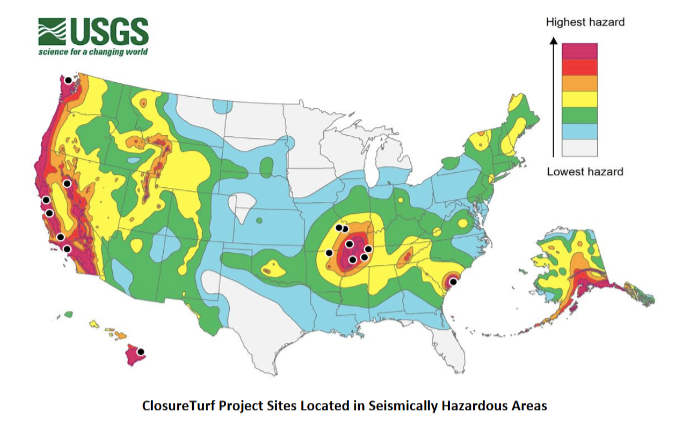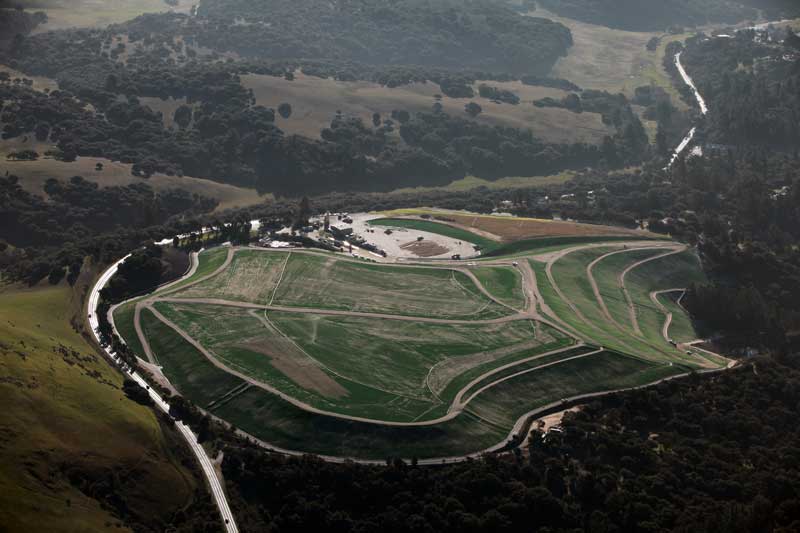
There are currently 15 ClosureTurf installation sites located in areas with hazardous seismic potential as classified by the United States Geologic Survey (USGS) and shown in the above figure. The maximum landfill slopes of these sites vary from 4 horizontal to 1 vertical (4H:1V) to as steep as 2H:1V.
Solid waste landfill slope stability can be adversely affected by seismic activity. Tension in a landfill soil cover can increase significantly during an earthquake, which can lead to potential cracking and sliding of the soil cover and damage to the geosynthetic components, including the geocomposite drainage layer and geomembrane. In the event of a sliding cap, there would likely be significant damage to existing landfill gas collection and control systems too, if any, requiring extensive repair.
The veneer slope failure associated with a conventional soil and geosynthetics final cover is no longer a concern for ClosureTurf under seismic conditions due to the removal of overburden soil layers. Engineers will always need to design for global waste stability, in seismic areas especially; however, ClosureTurf provides the additional benefit of maximizing airspace of landfills by allowing waste material at steeper slopes while minimizing the risk of final cover veneer slope failures. Alternatives include soil buttresses and geogrids which typically increase the cost and complexity of the project over the ClosureTurf option.

